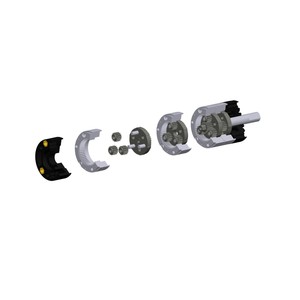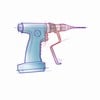Center Distance Influence on Gearbox Dynamics
Featured Product from Portescap

The center distance variation in the mathematical model is simulated by utilizing the housing bore position tolerance, with the influence on the noise characteristic being studied. The housing bore positions were displaced by specifying finite displacements of bearings, which are supporting shafts in the gearbox model. Multiple conditions based on housing bore tolerance ranges have also been studied. The results obtained from this paper may be used in gearbox diagnostics, with the sensitivity of housing bore tolerance also able to be analyzed.
INTRODUCTION
Gears may be designed to operate at a non-standard center distance to introduce backlash, to accommodate space constraints, and to adjust for both anticipated deflections under load and geometry changes due to thermal effects. For proper operation, center distance must be maintained within predetermined tolerances. Since the center distance is a machined dimension, it may not come out to be exactly what the design calls for. Moreover, due to mounting inaccuracies, misalignment and other faults created during the running or gearing of the system, the desired center distance is almost impossible to accurately achieve or maintain. This means that center distance may increase over its standard value, which can lead to a variety of issues. This research concentrates on the impact of the changes in the gear teeth engagement that are caused by housing bore position variations, which is achieved by defining forced displacements at bearings supporting the shafts in the gearbox housing. These displacements eventually cause the misalignments of the shafts, which impacts the dynamic behavior and noise characteristics in terms of Transmission Error (TE) and Acoustic Noise.










